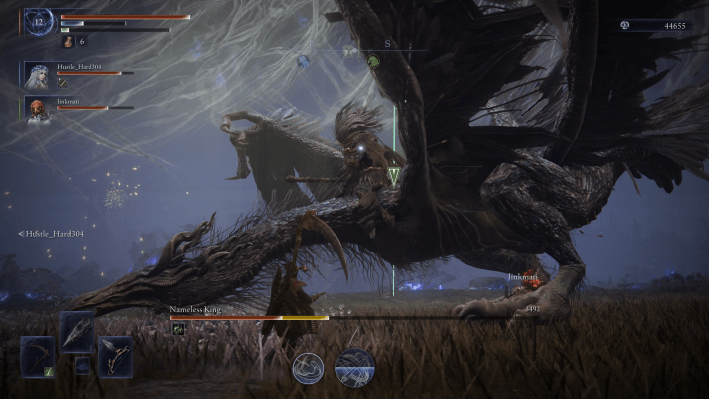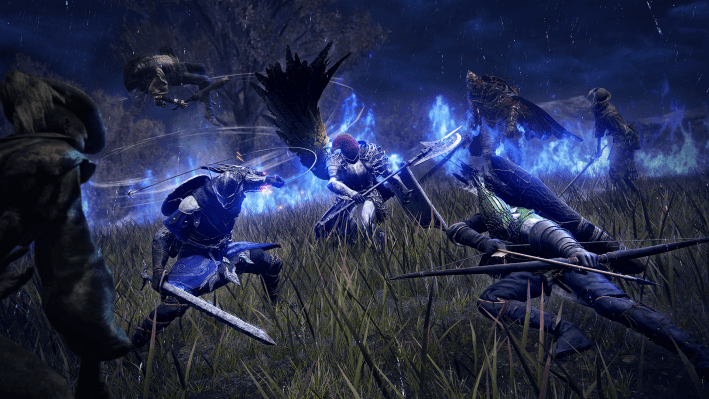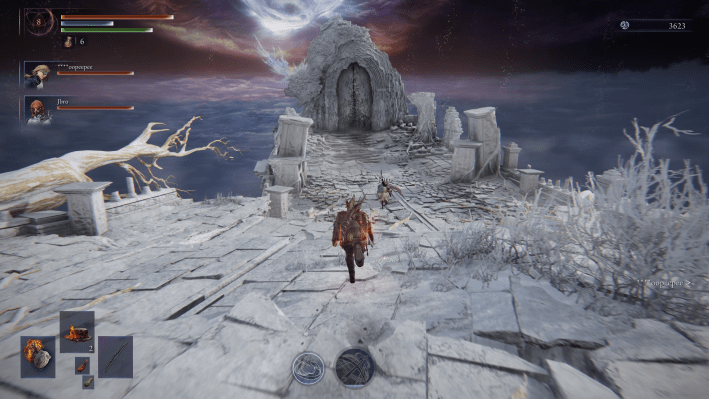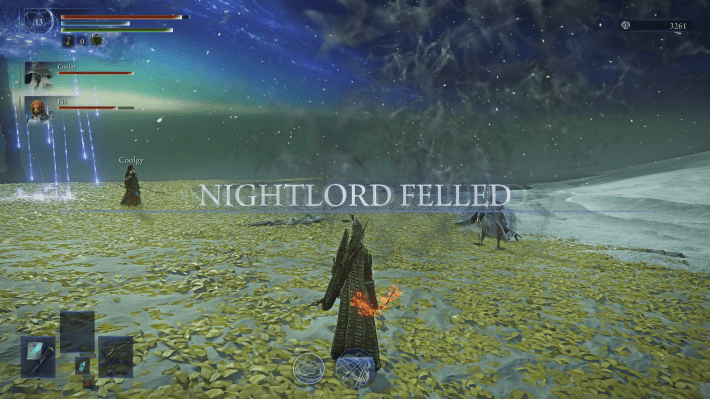Elden Ring Neightreign came out last week, and the response was thunderous “it’s OK.” For the first time in a while, FromSoftware has produced a non-VR game that has been perceived as somewhat mid. And on some level, thank god; Nightreign is healthier and more interesting because it actively does not feel like Elden Ring and is instead a freakish experiment that succeeds more than it doesn’t. It is a game that I liked far more than I expected, one that is slightly confusing, and one that is surprisingly unlike Elden Ring.
The elevator pitch for Nightreign is “Battle Royale Elden Ring,” which is both disorienting and also sort of quaint in 2025. Aping PUBG or Fortnite was huge for a few years, in a time that seems like an eternity ago. Not only does the game feel charmingly late to the trend, it’s a bizarre fit. Who looks at Elden Ring and thinks “yeah, let’s turn that into Apex Legends?” Had something like this been pitched years ago I would have assumed it was crass, but pulling this now feels like it comes from an earnest place.
While Elden Ring and its DLC, Shadow of the Erdtree, are primarily single player games with optional multiplayer co-op and PVP hooks, Nightreign is almost exclusively a three person PvE experience. The option to start as a duo does not currently exist, although the developers say they’re working on it, and while you can sorta play the game single player, it is clearly not optimized for this experience at all (although they did tweak it). Nightreign is a prequel that takes place in a hyper-condensed version of Limgrave known as Limveld. Three players are dropped Battle Bus style into the world on ethereal birds, although you do not have much of a choice of where you drop. Each round follows a three night structure: Your team must progress through the world as a shrinking ring of fire (known as Night’s Tide) closes in, quickly defeating hyper condensed versions of bosses and foes mostly recycled from Elden Ring and even the Souls games (although many have been retuned for this game). You do this with two rings over two nights, and on the final night you face off against a new and grandiose boss.

In an attempt to make this game structure coherent and expedient, Nightreign makes several radical changes. The pace is blisteringly fast. You do not need to get on and off of a mount in the game because you are constantly booking it. Fall damage is eliminated entirely, and you can jump up several sheer cliff faces faster than a goat. Additionally, leveling is simplified by the addition of eight distinct characters, known as Nightfarers, that live in a radically different version of the Roundtable Hold from the original Elden Ring. These characters not only have specific affinities based on how weapons scale, they also have three distinct abilities: a passive ability, a regular skill, and an ultimate.

I play Ironeye, an archer, who plays entirely differently than an archer in Elden Ring. For starters, arrows are unlimited now and do not need crafting. Ironeye also has the ability to close distances and tag an enemy with a weak point. This completely changes the pace of a ranged character and encourages you to remain at medium distances to be able to reapply the mark. Ironeye’s ranged weapons, counterintuitively, also give him a cleric-like utility as downed allies can be revived by doing them damage, a system that radically speeds up the pace of co-op.

There are several parts of Nightreign that are either actively abrasive or in conflict with each other. For starters, the game (currently) works best if you are playing with two friends you know, and if you do not have two friends, who you get matched with is the luck of the draw. I have played 24 hours of this game entirely queued with randos, and the experience can be charitably described as “mixed.” Some of this is not their fault: there’s a lot to learn in Nightreign and, like Shadow of the Erdtree before it, it’s not particularly good at onboarding you to the experience. For example, did you know that the weapons in your inventory often have passive abilities even when they are not directly equipped? I didn’t for longer than I care to admit.

If you’re lucky, you get queued up with players who know exactly what they are doing and know the quirks of every zone inside and out. Other times you get a couple of people who think they’re solo gods and just go off into the woods and die (as friend and Aftermath contributor Joshua Rivera called them, “a bunch of Yahoos”). Thankfully, I have found the general skill floor of players increased quite a bit after defeating the first boss. But even in ideal conditions, the complexity of what you need to accomplish with randos in the game is limited by the communication the game gives you. Pinging points and items on the map Apex Legends style can never match being on voice chat with all your friends.
Another point of tension is that while the game pace itself is very fast, the rounds themselves are not short. The combo can feel both exhausting and exhilarating, although that also means that, when you get to the end, if you eat shit at any of the bosses of the three days, you have to start from scratch. This is not entirely a bad thing, because when you do finally take a boss out, the rush is fantastic.

There are a lot of things that don’t work all the time in Nightreign. It is a confusing game, in part because it goes against much of the original appeal of Elden Ring. Elden Ring was thoughtful and sprawling, a game about exploration and discovery. Nightreign feels like five mods stacked on top of each other. “I would describe the Elden Ring experience as more of a journey, while Nightreign's experience is more of that on the battlefield," director Junya Ishizaki stated in an interview with CNET. Though it uses the same essential combat and enemies, the experience is paced so differently and the moment to moment goals are so alien that it’s hard to call it the same game. It feels less like Elden Ring and more like a game that is wearing Elden Ring like a skin suit.
It is fair to ask, “who is Nightreign for?,” and I’m shocked to report that it’s a game for me. I’m happy that Nightreign is a lumpy but interesting game, because FromSoftware was built on those. The FromSoft that existed before Miyazaki started hitting it out of the park was a lot of fun; that’s a history that’s often invisible to a lot of people who got on board around Demon’s Souls or Dark Souls. I am old enough to remember these games outside of the context of a YouTube video essay. Games like Chromehounds, both Otogi games and Metal Wolf Chaos were all genuinely fun. Some obviously did not hit, like Ninja Blade and Eternal Ring. One of my fondest memories of Kotaku was trying to get the Kinect-only Steel Battalion: Heavy Armor to work with Evan Narcisse, and that remains one of the most interesting games that sucks that I’ve ever played.

For all its faults, Nightreign feels like FromSoft is having fun. Its lukewarm reception lets the air out of the room just a tiny bit. Like Dark Souls II, it feels like an excuse to let someone else take the reins on a proven franchise and try to do something new with it; in this case, first-time director Junya Ishizaki. And though the result is a little mixed, the experiments conducted here feel like a wonderful training ground for building talent that will inevitably bear fruit (like how Dark Souls II co-director Yui Tanimura would go on to co-direct Elden Ring). Nightreign is a little lopsided, a tiny bit confusing, alienating to much of its player base, and far more interesting than I expected it to be. In it, you can see the seeds of something beautiful germinating.


